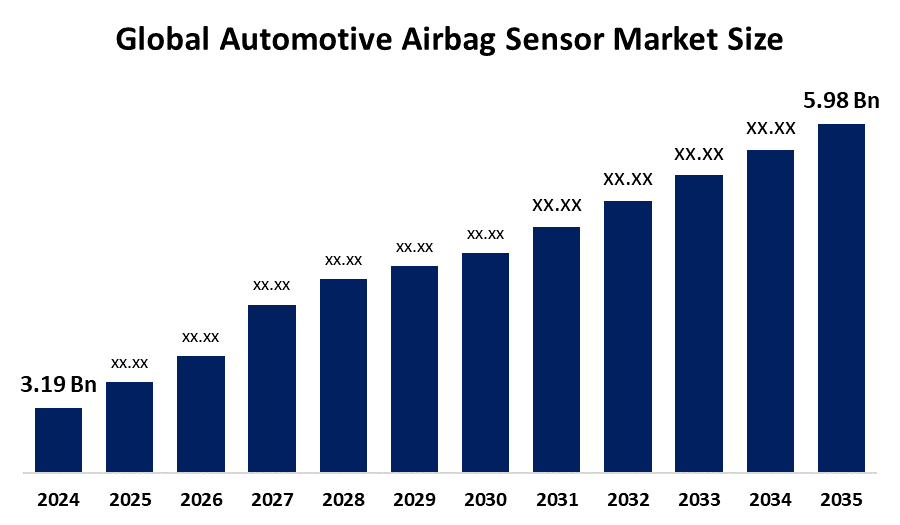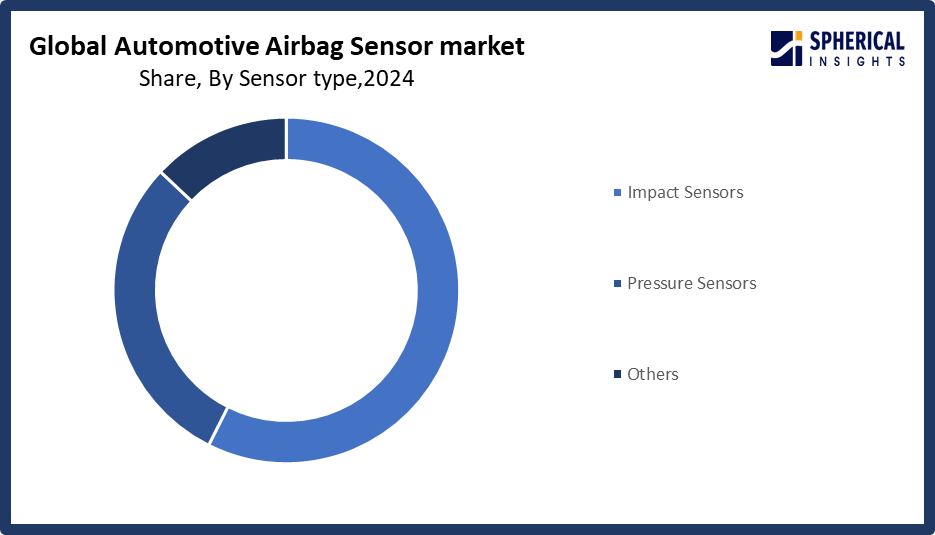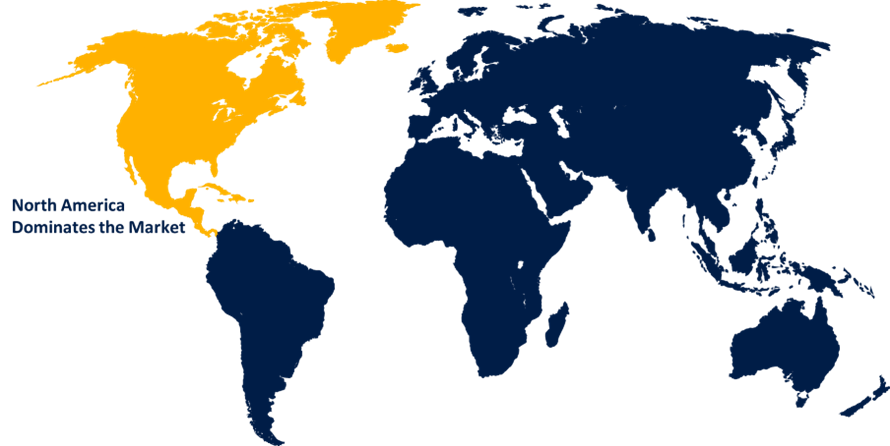Global Automotive Airbag Sensor Market Size, Share, and COVID-19 Impact Analysis, By Sensor Type (Impact Sensors, Pressure Sensors, and Others), By Vehicle Type (Passenger Cars, Commercial Vehicles, and Others), and By Region (North America, Europe, Asia-Pacific, Latin America, Middle East, and Africa), Analysis and Forecast 2025 - 2035
Industry: Automotive & TransportationGlobal Automotive Airbag Sensor Market Size Insights Forecasts to 2035
- The Global Automotive Airbag Sensor Market Size Was Estimated at USD 3.19 Billion in 2024
- The Market Size is Expected to Grow at a CAGR of around 5.88% from 2025 to 2035
- The Worldwide Automotive Airbag Sensor Market Size is Expected to Reach USD 5.98 Billion by 2035
- Asia Pacific is expected to Grow the fastest during the forecast period.

Get more details on this report -
According to a Research Report Published by Spherical Insights and Consulting, The Global Automotive Airbag Sensor Market Size was worth around USD 3.19 Billion in 2024 and is predicted to Grow to around USD 5.98 Billion by 2035 with a compound annual growth rate (CAGR) of 5.88% from 2025 and 2035. The market for automotive airbag sensors has a number of opportunities to grow as multi airbag systems are required in new cars due to more stringent safety standards worldwide, which is forcing automakers to use more and better sensors. Rising consumer awareness of occupant safety has led to a preference for cars with advanced airbag technology and high safety ratings.
Market Overview
An automotive airbag sensor is a safety component that senses impact forces, crashes, or abrupt deceleration within a car's supplemental restraint system. The main factor behind the market for air bag sensors is the demand for air bags in trucks and light commercial vehicles. As there are more fatal accidents, there is a higher need for airbags in automotive vehicles. For example, the Association for Safe International Road Travel states there are 3,287 individuals killed every day from traffic accidents, and automakers are looking to include more safety features in their car designs to provide people with better facilities that regard individuals safety. ZF Friedrichshafen AG, which is a German auto part manufacturer, indicated in 2019 that a European automaker will be including knee air bags into their car designs. LCVs have a distinct demand for airbags because of their mass usage in distributing products, last mile connectivity, and transporting lightweight building materials. On top of that, the global usage of cars is increasing in many countries due to increasing per capita income and faster urbanization. For instance, the International Organization of Motor Vehicle Manufacturers stated the number of new passenger automobiles sold or registered increased from 66.3 million to 69.5 million in 2016, further driving the revenue of the automotive air bag sensor market.
Governments are strengthening regulations and putting voluntary safety programs into place to promote the usage of airbags and sensor systems. For example, India's Ministry of Road Transport & Highways amended the Central Motor Vehicles Rules to require frontal, side torso, and curtain airbags in passenger automobiles by October 2023, making six airbags mandatory. In order to provide consumers with crash safety star ratings, India launched the Bharat New Car Assessment Programme at the same time. This incentivizes automakers to install more airbag units and sensors to get higher ratings.
Report Coverage
This research report categorizes the automotive airbag sensor market based on various segments and regions, forecasts revenue growth, and analyzes trends in each submarket. The report analyses the key growth drivers, opportunities, and challenges influencing the automotive airbag sensor market. Recent market developments and competitive strategies such as expansion, type launch, development, partnership, merger, and acquisition have been included to draw the competitive landscape in the market. The report strategically identifies and profiles the key market players and analyses their core competencies in each sub-segment of the automotive airbag sensor market.
Global Automotive Airbag Sensor Market Report Coverage
| Report Coverage | Details |
|---|---|
| Base Year: | 2024 |
| Market Size in 2024: | USD 3.19 Billion |
| Forecast Period: | 2025-2035 |
| Forecast Period CAGR 2025-2035 : | 5.88% |
| 2035 Value Projection: | USD 5.98 Billion |
| Historical Data for: | 2020-2023 |
| No. of Pages: | 168 |
| Tables, Charts & Figures: | 130 |
| Segments covered: | By Sensor Type, By Vehicle Type and COVID-19 Impact Analysis |
| Companies covered:: | Analog Devices Inc., Aptiv Plc, Ashimori Industry Co. Ltd., Autoliv Inc., Continental AG, Daicel Corp., DENSO Corp., Dorman Products Inc., HELLA GmbH and Co. KGaA, Hyundai Motor Group, Infineon Technologies AG, Magna International Inc., Mitsubishi Electric Corp., Nihon Plast Co. Ltd., Ningbo Joyson Electronics Corp., and Others |
| Pitfalls & Challenges: | COVID-19 Impact, Challenges, Future, Growth, & Analysis |
Get more details on this report -
Driving Factors
The automotive airbag sensor market is driven by advances in sensor related technologies and increasing vehicle safety requirements. Intelligent sensors that can enhance the effectiveness and reliability of airbag systems are one of the leading opportunities. The market is forecast to be transformed with the advent of intelligent airbag sensors that can process information in real time and connect with other vehicle systems to provide exponentially greater safety, for example, with real time identification and deployment. These intelligent sensors are expected to enhance passenger safety and appeal to manufacturers seeking distinction in their safety offerings. Because of the rising trend in connected and autonomous vehicles, airbag sensor manufacturers have an opportunity to develop next generation sensor products that will be aligned with enhanced safety requirements associated with these vehicles, which are undergoing rapid advancements.
Restraining Factors
The automotive airbag sensor market is restricted by factors like high development and integration costs for advanced sensor technologies. The increasing costs related to continuous innovation and field studies required to meet the changing demands of consumers, as well as safety expectations, may threaten the smaller players in the market with limited funding.
Market Segmentation
The automotive airbag sensor market share is classified into sensor type and vehicle type.
- The impact sensors segment dominated the market in 2024, accounting for approximately 35% and is projected to grow at a substantial CAGR during the forecast period.
Based on the sensor type, the automotive airbag sensor market is divided into impact sensors, pressure sensors, and others. Among these, the impact sensors segment dominated the market in 2024 and is projected to grow at a substantial CAGR during the forecast period. The segment is driven because they are widely used and can detect sudden impact or deceleration, which in turn deploys the airbag system. Impact sensors are commercially the most frequently utilized sensors due to the importance of deploying the airbag system in the event of a collision. Impact sensors are rapidly evolving due to technological advances, allowing for improved accuracy and reliability, which is increasing demand across the range of vehicle types in both passenger cars and commercial vehicles. As long as further technological advances continue, the impact sensor market is expected to expand over the next few years.

Get more details on this report -
- The passenger cars segment accounted for the largest share in 2024, accounting for approximately 72% and is anticipated to grow at a significant CAGR during the forecast period.
Based on the vehicle type, the automotive airbag sensor market is divided into passenger cars, commercial vehicles, and others. Among these, the passenger cars segment accounted for the largest share in 2024, accounting for approximately 72% and is anticipated to grow at a significant CAGR during the forecast period. The dominance is due to the high levels of production and sales volumes associated with this segment. Ease of public demand for improved safety in passenger cars is largely driving the uptake of newer airbag systems. Concern for safety to meet consumer demand and legal regulations has led to automakers adding more advanced air bag sensor systems to passenger cars, thereby promoting growth in this segment of the market.
Regional Segment Analysis of the Automotive Airbag Sensor Market
- North America (U.S., Canada, Mexico)
- Europe (Germany, France, U.K., Italy, Spain, Rest of Europe)
- Asia-Pacific (China, Japan, India, Rest of APAC)
- South America (Brazil and the Rest of South America)
- The Middle East and Africa (UAE, South Africa, Rest of MEA)
North America is anticipated to hold the largest share, representing nearly 35% of the automotive airbag sensor market over the predicted timeframe.

Get more details on this report -
North America is anticipated to hold the largest share, representing nearly 35% of the automotive airbag sensor market over the predicted timeframe. In the North American market, the market is rising due to the increased government focus on enforcing stringent road and vehicle safety laws and the automakers' adherence to those regulations as well. The awareness of airbags and vehicle safety is also contributing to the increased growth of the region's market.
The United States is dominating the automotive airbag sensor market due to its robust safety regulations, such as NHTSA mandates, high customer awareness of safety features in vehicles, and the existence of significant automakers and sensor manufacturers.
Asia Pacific is expected to grow at a rapid CAGR, representing nearly 9% in the automotive airbag sensor market during the forecast period. The Asia Pacific area has a thriving market for automotive airbag sensors due to increasing production and sales of automobiles in countries such as China, Japan, and India. In China, which is the largest automotive market in the world, demand for airbag sensors continues to increase due to the China New Car Assessment Program, as well as other government programs that are increasing vehicle safety standards.
China leads the automotive airbag sensor market due to its extensive domestic automotive supply chain, robust government safety regulations, fast rising consumer awareness of occupant protection, and large vehicle manufacturing scale.
Europe is expected to grow at a rapid CAGR, representing nearly 7% in the automotive airbag sensor market during the forecast period. The European area has a thriving market for automotive airbag sensors because it has a reputation for having high safety and environmental standards and regulations. The region's focus on increasing vehicle safety and reducing fatalities is also supporting the demand for advanced airbag systems. European manufacturers are leading the way in innovation by developing advanced airbag sensors and safety technology. As the popularity of electric and hybrid vehicles rises in Europe, to gain characteristics of high value luxury automobiles that offer advanced safety technology, the market is anticipated to increase.
Competitive Analysis:
The report offers the appropriate analysis of the key organizations/companies involved within the automotive airbag sensor market, along with a comparative evaluation primarily based on their type of offering, business overviews, geographic presence, enterprise strategies, segment market share, and SWOT analysis. The report also provides an elaborative analysis focusing on the current news and developments of the companies, which includes type development, innovations, joint ventures, partnerships, mergers & acquisitions, strategic alliances, and others. This allows for the evaluation of the overall competition within the market.
List of Key Companies
- Analog Devices Inc.
- Aptiv Plc
- Ashimori Industry Co. Ltd.
- Autoliv Inc.
- Continental AG
- Daicel Corp.
- DENSO Corp.
- Dorman Products Inc.
- HELLA GmbH and Co. KGaA
- Hyundai Motor Group
- Infineon Technologies AG
- Magna International Inc.
- Mitsubishi Electric Corp.
- Nihon Plast Co. Ltd.
- Ningbo Joyson Electronics Corp.
- Others
Key Target Audience
- Market Players
- Investors
- End-users
- Government Authorities
- Consulting And Research Firm
- Venture capitalists
- Value-Added Resellers (VARs)
Recent Development
- In April 2025, Autoliv introduced the Bernoulli Airbag Module, a passenger airbag system based on the Bernoulli principle, which allows larger airbags with more efficient inflation using a smaller single stage inflator.
- In June 2022, Autoliv is actively collaborating with the Malaysian Institute of Road Safety Research to enhance motorcycle safety through the development of a bag on bike airbag system. This collaboration aims to address the high incidence of motorcycle related fatalities in Southeast Asia, where such accidents accounted for 66% of all traffic fatalities in Malaysia.
Market Segment
This study forecasts revenue at global, regional, and country levels from 2020 to 2035. Spherical Insights has segmented the automotive airbag sensor market based on the following segments:
Global Automotive Airbag Sensor Market, By Sensor Type
- Impact Sensors
- Pressure Sensors
- Others
Global Automotive Airbag Sensor Market, By Vehicle Type
- Passenger Cars
- Commercial Vehicles
- Others
Global Automotive Airbag Sensor Market, By Regional Analysis
- North America
- US
- Canada
- Mexico
- Europe
- Germany
- UK
- France
- Italy
- Spain
- Russia
- Rest of Europe
- Asia Pacific
- China
- Japan
- India
- South Korea
- Australia
- Rest of Asia Pacific
- South America
- Brazil
- Argentina
- Rest of South America
- Middle East & Africa
- UAE
- Saudi Arabia
- Qatar
- South Africa
- Rest of the Middle East & Africa
Frequently Asked Questions (FAQ)
-
1. What is the CAGR of the automotive airbag sensor market over the forecast period?The global automotive airbag sensor market is projected to expand at a CAGR of 5.88% during the forecast period.
-
2. What is the market size of the automotive airbag sensor market?The global automotive airbag sensor market size is expected to grow from USD 3.19 Billion in 2024 to USD 5.98 Billion by 2035, at a CAGR of 5.88% during the forecast period 2025-2035.
-
3. Which region holds the largest share of the automotive airbag sensor market?North America is anticipated to hold the largest share of the automotive airbag sensor market over the predicted timeframe.
-
4. Who are the top 15 companies operating in the global automotive airbag sensor market?Analog Devices Inc., Aptiv Plc, Ashimori Industry Co. Ltd., Autoliv Inc., Continental AG, Daicel Corp., DENSO Corp., Dorman Products Inc., HELLA GmbH and Co. KgaA, Hyundai Motor Group, Infineon Technologies AG, Magna International Inc., Mitsubishi Electric Corp., Nihon Plast Co. Ltd., Ningbo Joyson Electronics Corp., and Others.
-
5. What factors are driving the growth of the automotive airbag sensor market?The automotive airbag sensor market growth is driven by the growing demand from consumers for improved safety features, the development of sensor technologies, the growing use of electric and driverless vehicles, and strict government safety requirements requiring numerous airbags per vehicle.
-
6. What are market trends in the automotive airbag sensor market?The automotive airbag sensor market trends include integration of artificial intelligence and machine learning, focus on occupant position and classification sensors, sustainability in sensor manufacturing, advanced MEMS sensors for enhanced performance, and regulatory mandates driving technological advancements.
-
7. What are the main challenges restricting wider adoption of the automotive airbag sensor market?The automotive airbag sensor market trends include high development and integration expenses, especially for low cost cars, because of the requirement for rigorous testing and adherence to safety regulations.
Need help to buy this report?